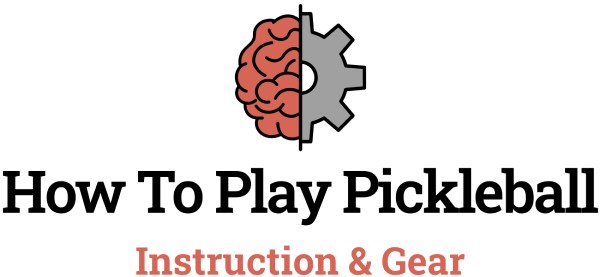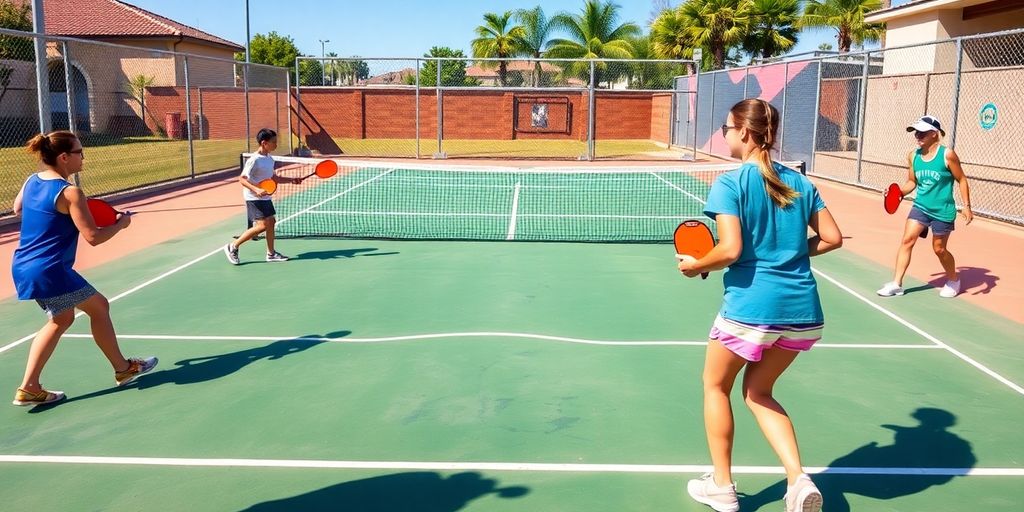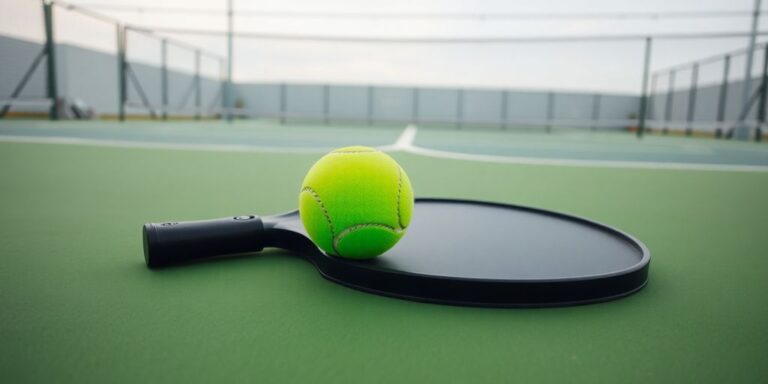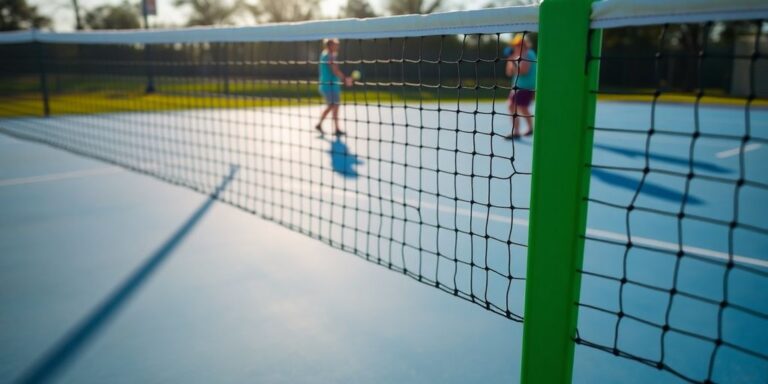Pickleball, a game many have come to love, wasn’t always the popular sport it is today. It all began back in the summer of 1965 on Bainbridge Island, Washington. A few friends, Joel Pritchard, Bill Bell, and Barney McCallum, were looking for a fun way to pass the time with their families. Little did they know, their backyard creation would turn into a sport played by millions worldwide. This article takes you on a journey through the fascinating history of pickleball, from its humble beginnings to its rise as a beloved pastime.
Key Takeaways
- Pickleball was invented in 1965 by Joel Pritchard, Bill Bell, and Barney McCallum.
- The game started as a fun family activity on Bainbridge Island, Washington.
- Pickleball combines elements from tennis, badminton, and table tennis.
- The name ‘pickleball’ has multiple origin stories, including a family dog named Pickles.
- Today, pickleball is a rapidly growing sport enjoyed by people of all ages.
The Birth of Pickleball: A 1965 Summer Innovation

Joel Pritchard’s Visionary Idea
In the summer of 1965, Joel Pritchard, a congressman from Washington State, found himself with a family in need of entertainment. On Bainbridge Island, Washington, he had the ingenious idea to create a new game. Using a mix of tennis, badminton, and table tennis, he laid the groundwork for what would become pickleball. This was not just a game; it was a new way to bring people together.
Bill Bell and Barney McCallum’s Contributions
Pritchard wasn’t alone in this venture. His friends, Bill Bell and Barney McCallum, joined in to refine the game. They started with ping-pong paddles and a perforated plastic ball, often used in wiffle ball games. Their collaboration was key to developing the sport’s initial rules and gameplay. The trio’s efforts turned a simple backyard game into a structured activity that captivated their families and friends.
The First Game on Bainbridge Island
The inaugural game took place on an old badminton court at Pritchard’s home. With makeshift equipment, the game was an instant hit. The simplicity of the rules and the fun of the game made it accessible to everyone, from kids to adults. This first game was the spark that ignited pickleball’s journey from a casual pastime to a beloved sport enjoyed by millions today.
The creation of pickleball was a testament to creativity and community spirit. From its first serve on Bainbridge Island, the game has grown beyond anyone’s wildest dreams, becoming a symbol of inclusivity and fun.
The Evolution of Pickleball Equipment

From Ping-Pong Paddles to Composite
Back in the day, pickleball was born out of simplicity. It all started with ping-pong paddles and a perforated plastic ball. But as the sport gained traction, players demanded more from their gear. This led to the development of composite paddles, a significant upgrade from the wooden ones. These new paddles, featuring fiberglass faces and honeycomb cores, offered better control and power. This shift in equipment wasn’t just about aesthetics; it changed how the game was played, allowing for more dynamic strategies.
The Development of the Pickleball
In the early days, any softball-sized wiffle ball was fair game for play. However, these balls were far from perfect, often swayed by the wind, affecting gameplay significantly. Barney McCallum, one of the sport’s pioneers, saw an opportunity to innovate. He developed specialized balls designed specifically for pickleball, reducing wind interference and ensuring consistent bounce. This advancement was crucial in making the sport more enjoyable and competitive.
The First Permanent Court
The transition from a backyard pastime to a recognized sport was marked by the creation of the first permanent pickleball court in 1967. This step was pivotal, providing a standardized playing field that helped formalize the game’s rules and structure. With a dedicated space, players could practice and compete more seriously, laying the groundwork for pickleball’s rapid growth.
Understanding the Name: Why ‘Pickleball’?
The Pickles the Dog Theory
One story that often makes its rounds is about a dog named Pickles. This theory is quite charming and revolves around the Pritchard family dog, Pickles, who supposedly loved chasing after the ball during games in the family’s backyard. The playful pup’s enthusiasm for the game led to the sport being named "Pickle’s ball," which eventually got shortened to "pickleball." However, there’s a twist: Pickles the dog wasn’t even around when the game was invented, as he was born three years later. So, while it’s a delightful tale, it might not hold up to scrutiny.
The Pickle Boat Explanation
The second explanation is a bit more nautical. Joan Pritchard, Joel’s wife, came up with the name inspired by the term "pickle boat" from her rowing days. In crew racing, a pickle boat is made up of leftover rowers from other boats, a fitting analogy since pickleball was created using elements from various sports like badminton, tennis, and ping-pong. This theory seems more plausible and is often favored by those looking for a more logical origin.
Debates and Discussions
Despite the ongoing debate over its quirky name, one thing is clear: pickleball’s charm and accessibility have captured the hearts of millions. Whether it’s the whimsical dog story or the more structured boat analogy, the name "pickleball" has become synonymous with a sport that brings people together across generations. As its popularity continues to soar, with over 4.2 million players in the U.S., the true origin of the name may remain a delightful mystery, adding to the sport’s rich tapestry of stories.
Pickleball’s Rise to Popularity
Early Adoption in Washington State
It all started in Washington State, where pickleball was born. Initially, this quirky game was just a fun backyard activity for families. But it didn’t take long for the locals to catch on. The simplicity of the game made it easy for everyone to play, and soon enough, it spread like wildfire across the state. Community centers and schools began introducing pickleball into their programs, and the first permanent courts started popping up. Washington was the launchpad for what would become a nationwide sensation.
The Role of Community Centers
Community centers played a huge part in making pickleball accessible to everyone. They started offering classes and organizing matches, which brought people together. It was a game that anyone could pick up, regardless of age or skill level. The sport’s social aspect made it perfect for community gatherings. As more people discovered the fun of playing pickleball, the demand for courts increased, leading to more facilities being built. These centers became the heartbeat of pickleball communities, fostering a sense of camaraderie among players.
National Expansion in the 1980s and 1990s
The 1980s and 1990s were pivotal decades for pickleball’s growth across the United States. During this period, pickleball transformed from a regional pastime into a national phenomenon. The formation of the USA Pickleball Association in 1984 laid the groundwork for organized play, establishing official rules and hosting tournaments. This helped standardize the sport and attract new players. As more people got involved, media coverage increased, further boosting its popularity. By the end of the 1990s, pickleball was no longer just a recreational activity; it was a sport with a growing competitive scene, drawing participants from coast to coast.
The Founding Fathers of Pickleball
Joel Pritchard: The Congressman
Joel Pritchard was more than just a congressman from Washington State; he was a visionary who helped bring pickleball to life. Back in the summer of 1965, Pritchard, along with his buddies, wanted to create a fun game to keep their families entertained. Using an old badminton court, ping-pong paddles, and a perforated plastic ball, they improvised what would soon become a beloved sport. Pritchard’s knack for innovation didn’t just stop at politics; he laid the groundwork for a game that would bring joy to millions.
Bill Bell: The Businessman
Bill Bell, a successful businessman, played a crucial role in the birth of pickleball. His business acumen was instrumental in transforming a casual backyard game into an organized sport. Bell’s enthusiasm and commitment helped spread pickleball beyond Bainbridge Island, turning it into a community favorite. His ability to see the potential in this simple game was a testament to his forward-thinking nature.
Barney McCallum: The Innovator
Barney McCallum was the third key figure in the creation of pickleball. Known for his inventive spirit, McCallum was quick to recognize the need for specialized equipment as the game gained popularity. He spearheaded the development of the first manufactured pickleballs, improving gameplay by reducing wind interference. McCallum’s contributions didn’t stop there; he was also pivotal in crafting the rules that made pickleball accessible and enjoyable for players of all ages.
The trio’s collaboration on Bainbridge Island in 1965 was more than just a summer pastime; it was the beginning of a sport that would capture the hearts of people worldwide. Their legacy is a testament to the power of creativity and friendship.
Pickleball’s Impact on Modern Sports Culture
A Sport for All Ages
Pickleball’s charm lies in its universal appeal. The game is easy to learn, making it perfect for kids, yet it has enough depth to keep adults engaged. Its adaptability means that players of all ages can enjoy it together. Retirement communities love it because it offers a fun way to stay active and socialize. Schools are adding it to their PE programs, introducing the sport to younger generations. This cross-generational play is a big reason for its growing fanbase.
The Role of USA Pickleball Association
The USA Pickleball Association (USAPA) has been instrumental in promoting the sport. They organize tournaments, set rules, and help standardize equipment. Their efforts have led to a surge in the number of pickleball courts across the country. The USAPA’s work ensures that whether you’re playing in a small town or a big city, the game remains consistent and fair.
Future Prospects and Olympic Dreams
The future looks bright for pickleball. With its rising popularity, there’s talk of it becoming an Olympic sport one day. More and more professional tournaments are popping up, drawing in players from around the globe. The sport’s growth is fueled by its community-driven nature, with clubs and leagues forming everywhere. As technology advances, who knows what innovations will come next? For now, pickleball continues to capture hearts and rackets worldwide.
Pickleball isn’t just a game; it’s a movement. Its simplicity and inclusivity have turned it into a beloved pastime, bridging gaps between generations and communities. As it grows, it promises to keep bringing people together, one paddle at a time.
Pickleball is changing the way we think about sports today. It’s not just a game; it’s a movement that brings people together and encourages fun and fitness. If you want to learn more about how pickleball is shaping modern sports culture, visit our website for tips, tricks, and exclusive content!
Conclusion
So, there you have it. Pickleball, a game born out of a simple idea to entertain a few families, has grown into a beloved sport played by millions. From its quirky name origins to its rapid rise in popularity, pickleball’s journey is as fascinating as the game itself. Whether it was named after a dog or a boat, one thing’s for sure – the sport has captured the hearts of many. As it continues to evolve, who knows what the future holds? Maybe one day, we’ll even see it in the Olympics. Until then, grab a paddle and join in on the fun!
Frequently Asked Questions
Who came up with the idea for pickleball?
Pickleball was created by Joel Pritchard, Bill Bell, and Barney McCallum in 1965 on Bainbridge Island, Washington. They invented it to entertain their families during a summer vacation.
How did pickleball get its name?
The name ‘pickleball’ has two main stories. One says it was named after a dog named Pickles who liked to chase the ball. Another story says it comes from ‘pickle boat,’ a term in rowing for a boat made of leftover rowers.
What was used to play the first pickleball game?
The first game used ping-pong paddles and a plastic ball with holes, like a wiffle ball. They played on a badminton court with the net lowered.
Where was pickleball first played?
Pickleball was first played in the summer of 1965 at Joel Pritchard’s home on Bainbridge Island, Washington.
When was the first permanent pickleball court built?
The first permanent pickleball court was made in 1967 in the backyard of Joel Pritchard’s friend, Bob O’Brian.
How fast did pickleball become popular in the U.S.?
Pickleball spread slowly at first, gaining fans in communities and retirement homes during the 1970s and 80s. It became much more popular in the 1990s, reaching all 50 states by the end of the decade.




